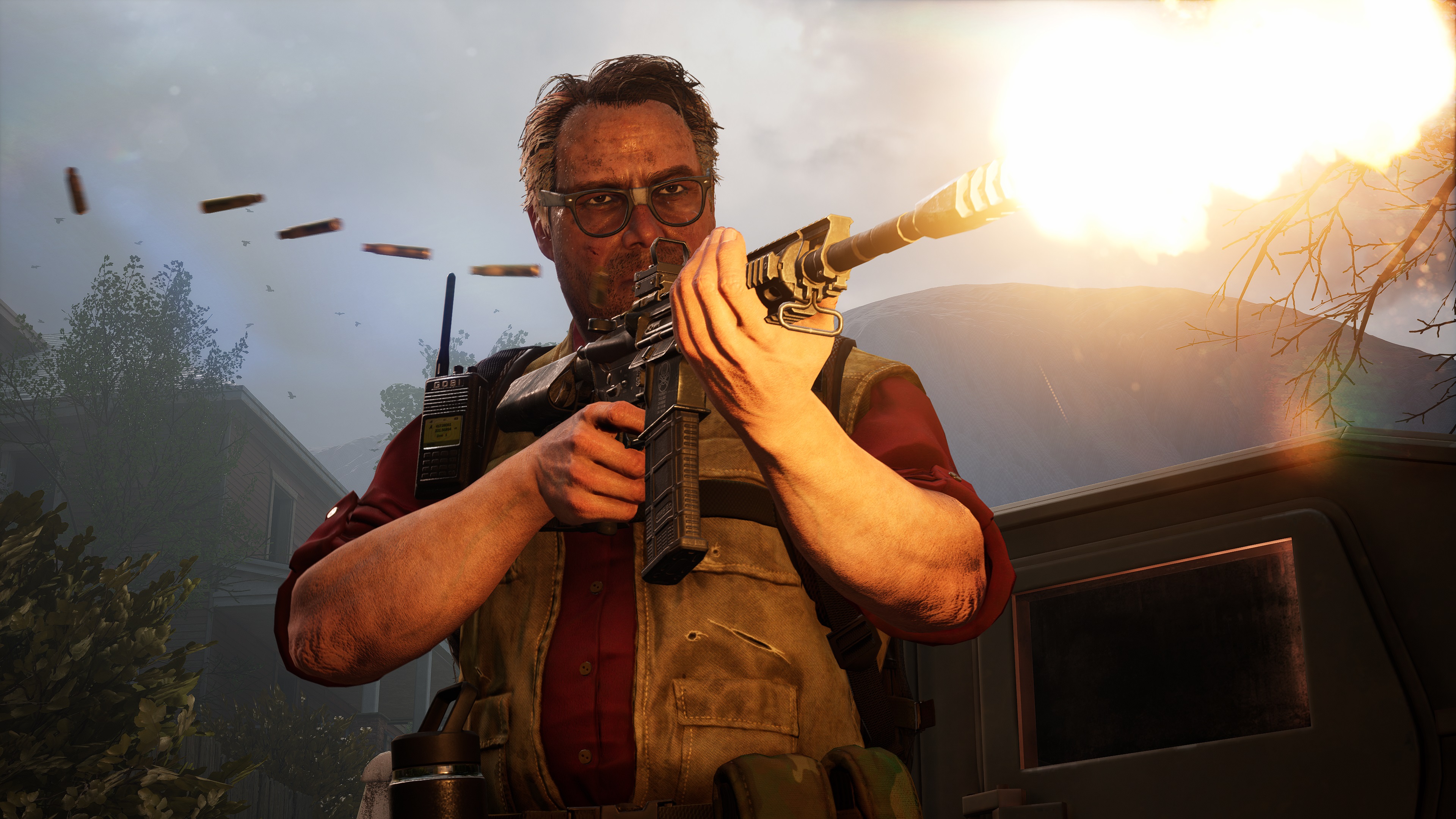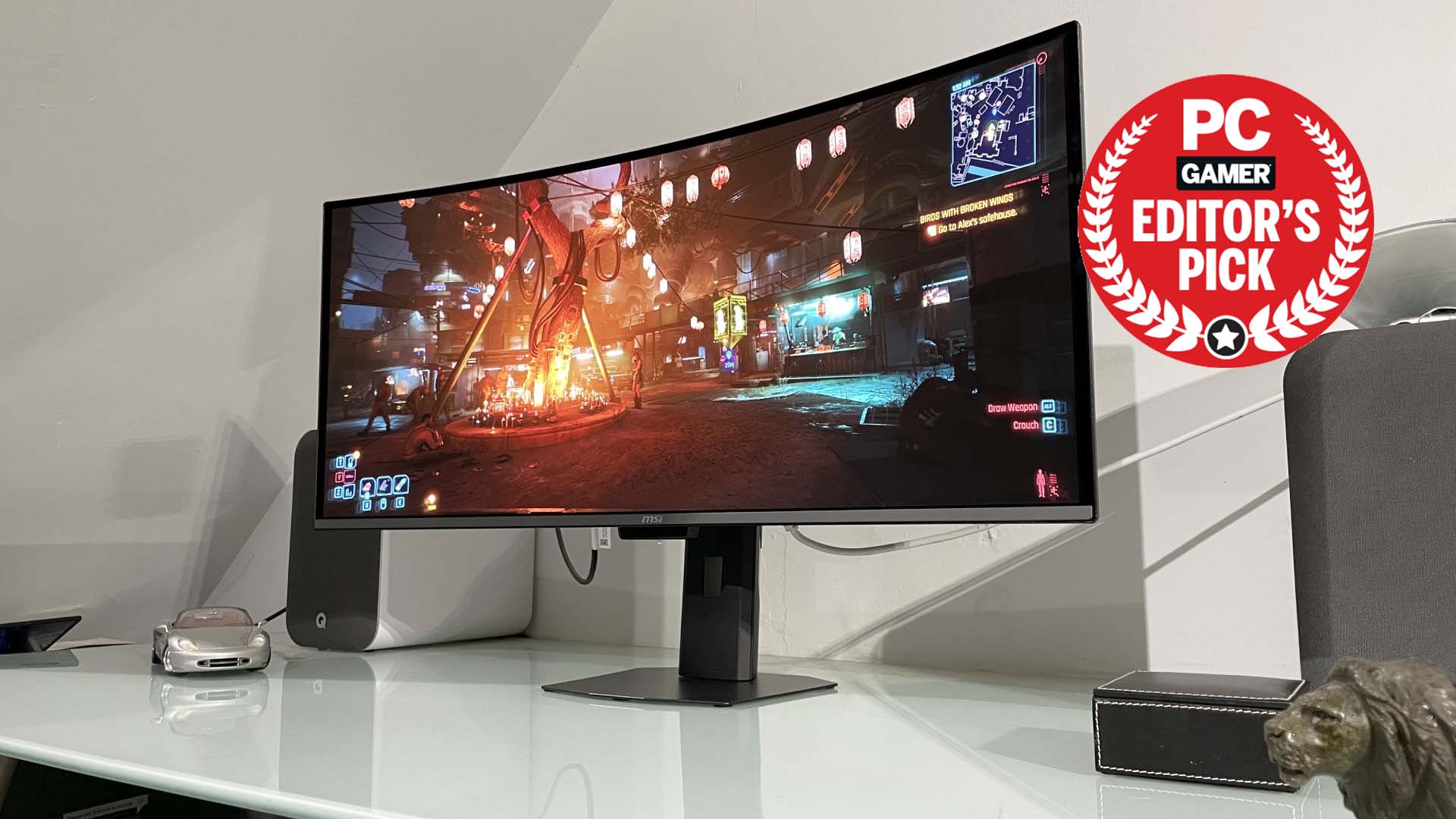Our Verdict
Back 4 Blood is an exceptional FPS that sets a new standard for co-op zombie murderfests.
PC Gamer's got your back
What is it? A co-op FPS from the makers of Left 4 Dead.
Released October 12, 2021
Expect to pay $60/£50
Developer Turtle Rock Studios
Publisher Warner Bros
Reviewed on RTX 2060, Ryzen 5 2600 3.4GHz, 16GB RAM
Multiplayer? Co-op up to 4 players, competitive up to 8
Link Official site
Remember when Left 4 Dead established the run-and-gun co-op genre as we know it, and then Valve stopped making them after hitting the number 2? I love Left 4 Dead 2 and still go back to it because no other co-op game has managed to scratch the same itch. World War Z wasn't my thing. Payday 2 was meh. Deep Rock Galactic is great, but different. Killing Floor 2 and Vermintide are fine. Back 4 Blood, which was made by the original Left 4 Dead studio that Valve gobbled up and then spit back out years ago, is a remarkably fun shooter that manages to out-zombie Left 4 Dead, which I was starting to believe was impossible.
Back 4 Blood recaptures the tempo of 2009, where I'm lining up headshots by the dozen while I shoot the shit with friends. Turtle Rock has faithfully resurrected the fun, heart-pumping zombie slaying that others have only attempted. Just making an unambitious Left 4 Dead 3 would've been enough for me, but Back 4 Blood is also a deck builder, a looter, a hero shooter, and even a bit of a roguelite. It's a game that Turtle Rock couldn't have made 10 years ago, and it's the addition of these smart, modern ideas that make it great.
Right from the jump, Back 4 Blood flips the premise of Left 4 Dead on its head. You're no longer average-joe survivors scrambling to escape crumbling cities. You're zombie-killing mercenaries who hunt down infestations, rescue trapped civilians, and gather supplies for surviving settlements. Each bundle of levels begins with your party leaving the safety of the Fort Hope hub world to go look for trouble. It's kinda like skipping straight to later seasons of The Walking Dead in which everyone still alive is a superhuman murder machine.
This describes Back 4 Blood's Cleaners, eight tough characters with unique stat bonuses for themselves and the entire team. These aren't Overwatch heroes with splashy ultimate abilities, but the Cleaners do invite interesting, slightly different playstyles—Holly is a melee specialist who earns stamina back on each kill, Hoffman carries an extra grenade and gives the whole team more ammo, and Mom gets a free revive once per mission. As I mentioned in my initial impressions, I've enjoyed maining Doc for most of my runs. Not only can she use medkits faster and heal everyone for free, but she also starts with the M9 pistol and MP5, two of my favorite guns.
Picking a survivor in Left 4 Dead is mostly about whose voice quips you'd like to hear. Back 4 Blood's Cleaners quickly won me over, not because they have a ton of personality, but because it's fun to play a specific role in this sort of game. Even more depth emerged once I started combining Cleaner abilities with the game's other standout mechanic—deckbuilding.
Stacked deck
Between runs, players can build 15-card decks from 100-plus unlockable cards with effects that range from minor health bonuses to major gameplay changes. Each player can handpick a few cards at the start of a run, but after that they only draw one per level. If a run ends with zero continues left, everyone's deck is reshuffled.
The starter cards are a bit boring (+10 stamina, hooray), but before long I was unlocking transformative skills that encouraged me to specialize. Over 20 hours I've crafted one hell of a support deck that pairs nicely with Doc. By the time I've drawn all of my cards, I can carry more medkits, heal teammates better than they can themselves, and tank a ton of damage while I revive others. Another favorite card is Buckshot Bruiser, which grants temporary HP for each shotgun pellet that hits an enemy (very lucrative against Back 4 Blood's lineup of durable special zombies).
Keep up to date with the most important stories and the best deals, as picked by the PC Gamer team.
Some of the coolest cards also come with a significant drawback, like Admin Reload, which will automatically reload guns when you holster them at the cost of 15% of your ammo carrying capacity. Or Killer's Instinct, which heavily increases weak spot damage but disables aim-down-sights. Here's a brief sample of a few other cards that show how varied builds can be:
- Headband Magnifier: +125% use speed, but when you take damage, you have a chance to be blinded for 1 second
- Ammo Mule: +75% ammo capacity, disables support slot (medkits, bandages, etc)
- Combat Knife: Turns your standard melee attack into a powerful knife attack
- Quick Kill: +50% hipfire accuracy, disables aim-down-sights
- Mean Drunk: +75% melee damage, melee attacks cleave through enemies, disables sprint
- Down In Front!: While crouched, you neither take nor deal friendly fire, +10 health
Honestly, I was ready to hate the card system when I first read about it. It seemed like a way to artificially extend the replayability of Back 4 Blood, and as an FPS player, I was worried all these passive bonuses would create a bunch of invisible math for me to fret over. Who wants to fiddle with cards in an action game?
I'm happy to admit that I was wrong and grumpy—I've spent at least an hour of game time building five distinct decks, and I keep going back to shift them around as I unlock more cards. It definitely helps that it's only 15 cards to a deck, though it would've gone even faster if the deckbuilding menu were designed exclusively for mouse and keyboard.
Aim true
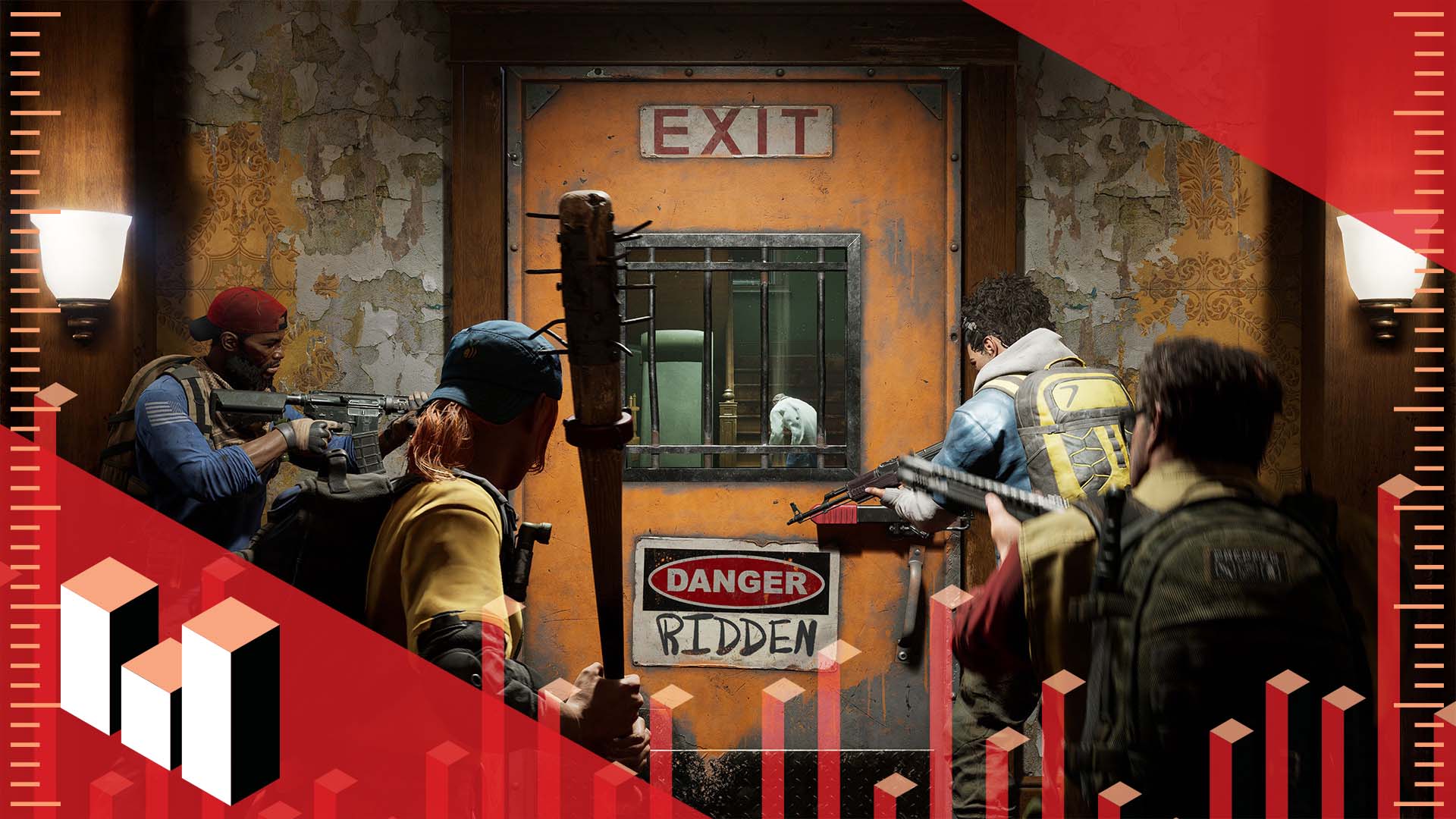
Back 4 Blood is a beautifully optimized game that plays nice with PCs of all kinds. Check out our full Back 4 Blood performance analysis to see how it'll run on your machine, but it never gave me any problems on my RTX 2060. With DLSS on Quality mode at 1080p, I flipped on the high preset, enjoyed an average of 80-90 fps, and never looked back.
The card system wouldn't mean much if Turtle Rock didn't nail the basics. Back 4 Blood's gunplay is remarkably good—so good that I wish most competitive shooters played this smoothly. The Source engine's stilted first-person animations have been traded for fast, flourished reloads that beautifully bookend a fight and still look good when sped up by card perks.
Modern touches like optional hitmarkers (white for hit, yellow for crit, red for dead), a contextual ping system, and distinct sound cues for headshots provide gratifying information during every encounter. I went back to Left 4 Dead 2 this week to compare the two games and immediately missed those hitmarkers as I emptied an Uzi magazine into a horde.
The arsenal itself is much more diverse than Back 4 Blood's predecessors, helped by the addition of an attachments system that's straight out of Apex Legends and PUBG. 30 guns (pistols, SMGs, assault rifles, LMGs, sniper rifles, shotguns, plus melee) all manage to fill a different niche. I was constantly switching weapons throughout my first playthrough and never shot them all.
On top of guns and cards, players can visit a store at the start of each mission to buy better guns, attachments, healing items, grenades—basically all of the stuff that Left 4 Dead used to just give you in each new saferoom and a lot more.
Attachments are especially interesting, as they come in different rarities that can offset a gun's inherent weaknesses. I enjoy that everything you can slap on your gun is a pure buff instead of the give-and-take I'm used to in Call of Duty's create-a-class. Back 4 Blood is one of the few games in which using a suppressor doesn't tank the damage of your gun. In fact, here it provides a massive sneak attack bonus to any Ridden that hasn't noticed you yet (neat!). The only downside to one attachment is that you're foregoing another—an Extended Fast Mag can speed up the lethargic reload of the M249, but you also lose out on armor-piercing rounds.
What to buy and when becomes a major part of strategy on Back 4 Blood's harder modes, which is where I started shouting mean words at my monitor. Copper, the in-match currency, becomes much more scarce outside of Recruit difficulty, and the allure of splurging on an expensive laser sight for my M4 over a team-wide medkit upgrade is hard to resist.
You can also drop Copper and ammo for your teammates to pool resources, but I wouldn't count on random players to be so generous—one of the countless reasons why Back 4 Blood is way more enjoyable with friends.
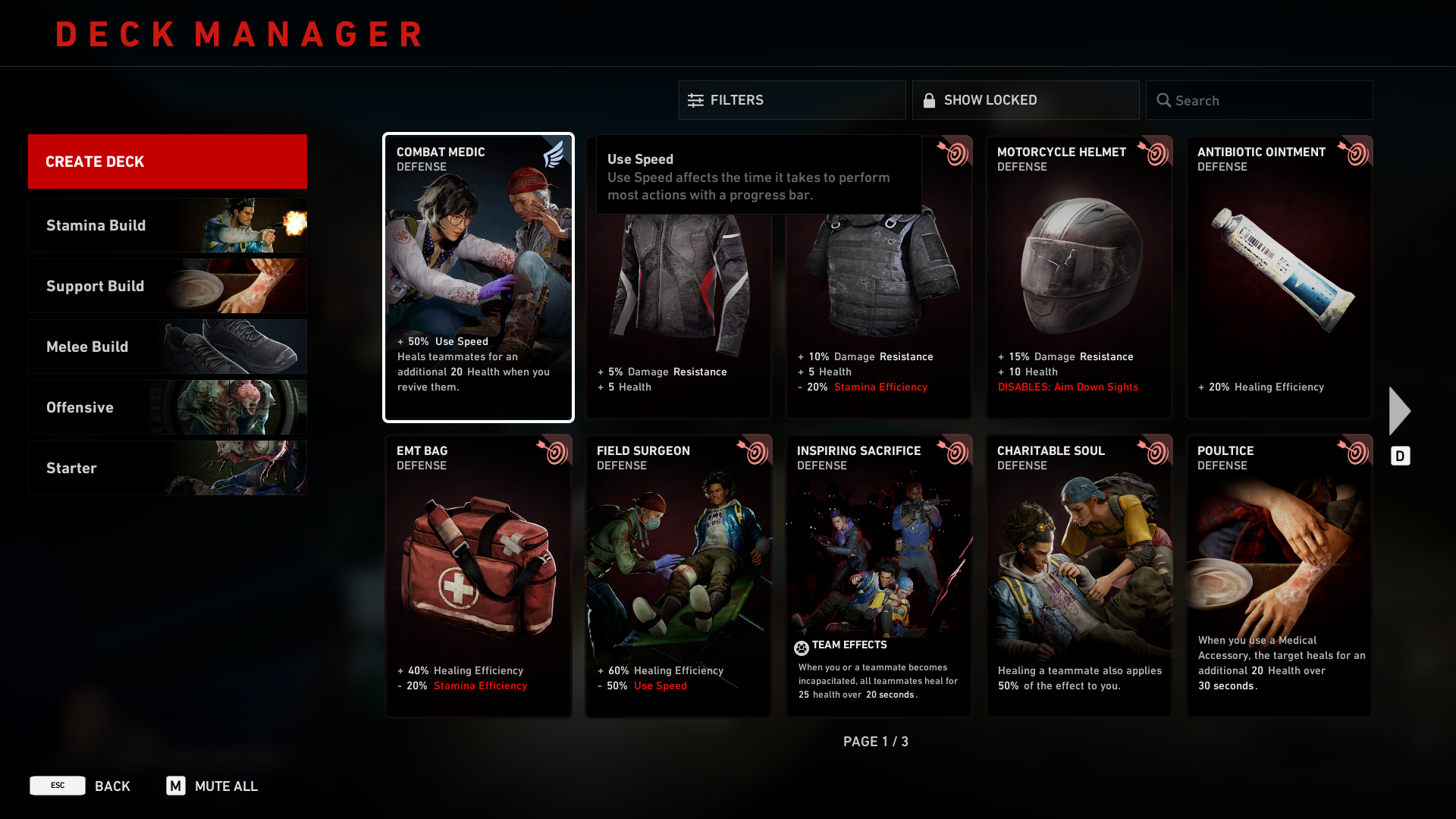
Zombie panic
Back 4 Blood's main campaign is a pretty long stretch of around 30 levels. There are a few stinkers, particularly the briefer finale missions that end each Act, but the majority go big on Left 4 Dead's linear level design. City streets and spooky forests are denser and there are more avenues to break off and explore. Scavenging for an extra minute before leaving an area often rewarded us with extra Copper, ammo caches, or better guns. But we couldn't meander forever—many missions have an on-screen timer warning when the next horde will arrive.
The diversity of Back 4 Blood's missions feels like a direct response to the common Left 4 Dead criticism that it wasn't long enough. The card system gives the maps slightly different looks with Corruption Cards that modify the world and zombie behavior. One run may be foggy, or have armored zombies, or zombies with exploding heads, or more security doors that trigger alarms. I'm a big fan of these random mutators, though these exploding head zombies keep cramping my melee playstyle.
The further you progress in the campaign, the meaner they get. By Act 3, the AI director was throwing sprinting zombies at us that deal double damage and leave acid behind. Uncool. I've spent most of my time so far on the lowest, default Recruit difficulty usually playing with at least one friend. The first two acts were pretty breezy and fun—the perfect amount of challenge for when you just wanna turn your brain off and de-brain some Ridden.
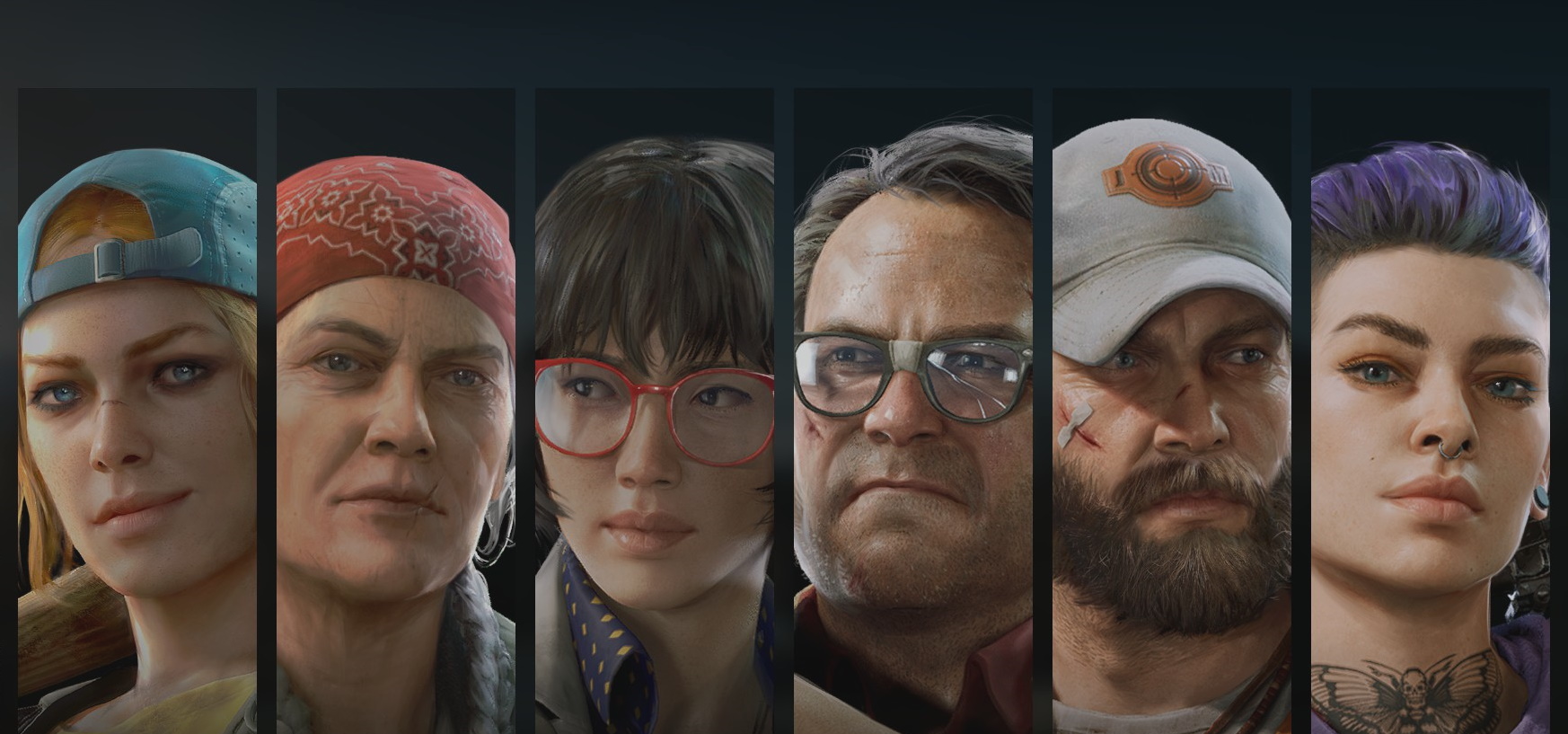
One difficulty setting higher, Veteran, is the polar opposite. Copper and ammo are scarcer and med stations now cost money to restore max health. The early missions we previously breezed through are desperate fights for our lives. We can pretty much hold our own against standard enemy waves, but trigger one car alarm and we're overwhelmed in seconds. It is pretty cool to have to worry about hazards that didn't present much of a threat before, but the rate at which the hardest-hitting Tallboys and Hocker enemies spawn starts to get ridiculous.
The appearance of these stronger mutations is supposed to be an event curated by Back 4 Blood's AI director, but at a certain point it feels like Turtle Rock just flips the "Oops, all exploders" switch and we die. The game has only been out one full day and Turtle Rock is already tweaking spawn rates, so I expect Veteran will improve over time.
Knowing how much harder the back half of Act 3 is, I shudder at the thought of pressing on. The hardest setting, Nightmare, turned medium-sized zombie encounters into hopeless slaughter for this lapsed Platinum-ranked Rainbow Six Siege player.
Versus
Speaking of pain, Back 4 Blood also has a PvP mode called Swarm. Like Left 4 Dead's Versus mode, Swarm pits four human Cleaners against four other players controlling the special Ridden breeds. But unlike the old Versus setup that was basically the standard campaign with smarter, human-controlled enemies, Swarm is a timed survival mode that repurposes chunks of campaign maps into small arenas. The only goal is to hold out for as long as possible, and when all of the Cleaners are dead, teams switch sides and try to beat the other's time.
The elegantly balanced sadism of the campaign goes out the window in a competitive environment. Every team I've played against has had the same idea to pin players in place with the Hocker, spew acid with the Retches, and smash us to bits with a Tallboy in one hellish coordinated attack. In the words of my friend who was instantly killed when all four players piled onto him last night, "OH GOD. NOOOOO, AHHHHHHHH!"
Part of the problem are the powerful upgrades Ridden players can buy mid-match that boost their defense and offense. So while the Ridden only get beefier, Cleaners are basically stuck with the same junk they started with. This all makes sense in the context of it being a time trial—it's supposed to be harder for Cleaners to stay alive as a round rages on, but this only highlights Swarm's fundamental flaw. Getting overpowered by unreasonably strong Ridden players is a feature, not a bug. Even when you win by time, you still feel like you lost.
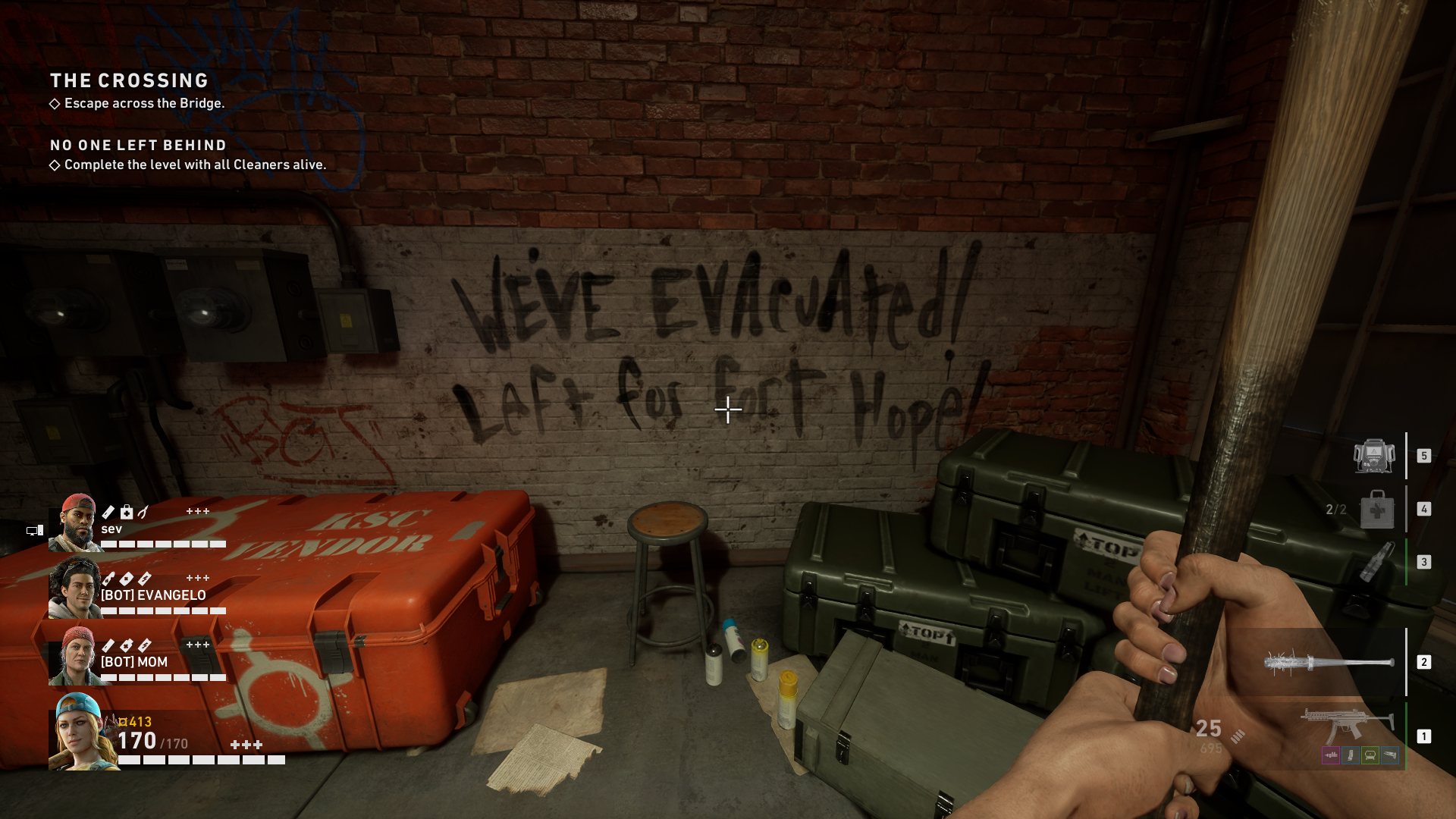
Playing the Ridden is a lot more fun, because of the whole 'being wildly overpowered' thing, but the arenas are so small that it's hard to ever catch a breath and plan your next move. You're better off running straight into a cluster of Cleaners at the same time as your teammates and hoping for the best. It's good for a few laughs, but not much else.
Swarm sits in stark contrast to the thrill of limping half-dead into a safe room just as a Hunter is leaping at your face. Left 4 Dead leveraged the strength of its campaigns in Versus, and it's a wonder why Back 4 Blood hasn't done the same. Thankfully, Back 4 Blood is a big game and Swarm isn't its heart and soul, but if PvP was the main appeal of Left 4 Dead for you, Swarm will just ruin your day.
It speaks to how strong of a game Back 4 Blood is that one of its modes can suck so hard that it barely detracts from my overall fun. Back 4 Blood is its co-op campaign, and it's best played with friends. That's how I'd recommend you play it as well if you're able (it's on Game Pass and has crossplay, if that helps). It's definitely not the same with randos and bots, but the ping system does help bridge the communication gap if mics aren't plugged in.
I'm lucky to have played Back 4 Blood the way it's meant to be, because it's some of the best co-op fun I've ever had in a videogame. And while it's a bummer that Back 4 Blood likely won't have the same mod support that spawned incredible player-made content in Left 4 Dead 2 (it is a live service game in 2021, after all), I'm excited to see what's ahead on Turtle Rock's annual pass. Apparently there's a new story, Cleaners, and special Ridden types on the way. Count me in.
Back 4 Blood is an exceptional FPS that sets a new standard for co-op zombie murderfests.

Morgan has been writing for PC Gamer since 2018, first as a freelancer and currently as a staff writer. He has also appeared on Polygon, Kotaku, Fanbyte, and PCGamesN. Before freelancing, he spent most of high school and all of college writing at small gaming sites that didn't pay him. He's very happy to have a real job now. Morgan is a beat writer following the latest and greatest shooters and the communities that play them. He also writes general news, reviews, features, the occasional guide, and bad jokes in Slack. Twist his arm, and he'll even write about a boring strategy game. Please don't, though.
